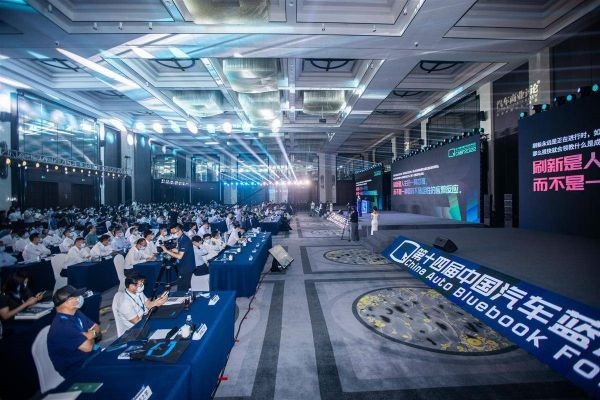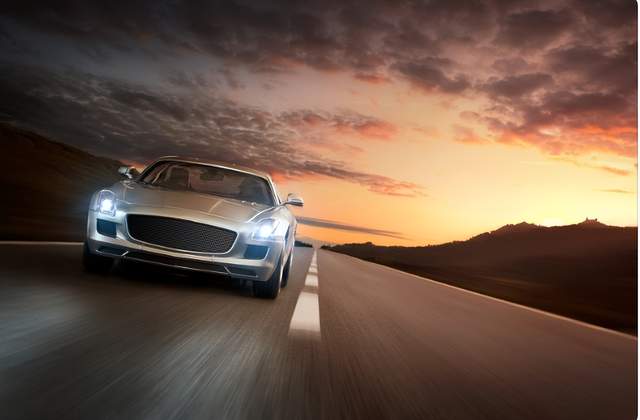Laser radar battlefield is getting fiercer and more intense
Author:Liu Kuang Time:2022.08.07
Since the release of Xiaopeng's new car P5 in 2021 and the opening of smart cars with laser radar, lidar production has gradually become possible. In June this year, Weilai ES7 was equipped with Tutong's Lidar Falcon, and the ideal L9 was equipped with the AT128 ultra -high -definition laser radar of Hesai Technology. Subsequently, Huawei and DJI also entered the laser radar track, hoping to divide a piece of cake, and the laser radar track was lively for a while.
After seeing Tesla's frequent accidents, the industry was even more aware of the importance of car lidar, and car companies began to accelerate the laser radar on the car. At present, the autonomous driving scheme with lidar -based sensors in the industry has expanded from the new forces of vehicles, including Weilai and ideal, to traditional car companies including Mercedes -Benz and BMW. They have greatly stimulated the outbreak of the laser radar market.
The picture comes from Canva.
The lively and extraordinary laser radar market
According to YOLE's calculations, the overall market for Lidar will increase from US $ 180 million in 2020 to US $ 5.7 billion in 2026, with a compound annual growth rate of 23%. Among them, the market has the fastest market growth in the car laser radar. It is expected that it will increase from US $ 26 million in 2020 to US $ 2.3 billion in 2026, with a compound annual growth rate of 94%. The market shows an explosive growth trend. The reason why the car laser radar market has grown so rapidly is due to the following factors stimulation.
First, the accelerated penetration of autonomous driving has driven the rapid growth of the lidar market. According to IDC statistics, in the first quarter of 2022, the domestic autonomous driving market, the penetration rate of L2 -level autonomous driving passenger cars was 23.2%, an increase of 7.5%year -on -year. Since 2022, a number of models that support L3-L4 autonomous driving, including Mercedes-Benz, BMW, Weilai, Xiaopeng, etc., are delivered to the delivery. The average laser radar is equipped with about 2. This is certain. To the extent, the mass production of lidar is accelerated.
Second, a variety of technical routes of laser radar can meet the different needs of autonomous driving in different scenarios. Except for Tesla, other OEMs are actively deploying autonomous driving solutions with lidar -based sensors.
For example, low -speed closed scenarios such as ports and mines have high cost and reliability of laser radar, and can choose a high -mature rotor or MEMS solution; and the performance, reliability and cost of ADAS scenarios to laser radar The requirements are very high, and you can choose 905nm+mirror/MEMS+TOF solution.
Third, the price of laser radar affected by factors may be reduced, and it is expected to decline, and it may become the standard sensor for autonomous cars in the future. At present, because the manufacturing technology of lidar is not mature and the cost is too high, it has not entered a large -scale mass production stage. To this end, car manufacturers are deeply bound to laser radar manufacturers through investment to obtain low -cost lidar.
For example, Weilai participated in the B+round of financing of Toton, and this financing was used to promote the large -scale mass production delivery of Weilai ET7 lidar. The more car companies that cooperate with laser radar manufacturers, the cost of laser radar under scale effects is also expected to be further reduced. In the future, lidar production is expected to further accelerate.
Co -choice of conspiracy
In the context of high popularity of autonomous driving, whether it is a startup player or a large factory, they have chosen to promote the mass production of laser radar to accelerate the car, and they are also quite similar in the implementation path.
On the one hand, they can control the cost of controlling the production line to improve their capacity delivery capabilities. One of the main reasons for laser radar to mass production is expensive, so in order to control the cost, startup players and large manufacturers have chosen self -built smart production lines.
For example, DJI already has a mature laser radar production line, with an annual production capacity of 200,000 production lines. Huawei has also established the first Pilot production line of car -level lidar, which is planned to advance 100,000 sets per year. In addition, the Maxwell Smart Manufacturing Center, which has an annual output of more than one million self -built production capacity of Hesai Technology, can not only meet the rapidly growing order demand, but also match the consumer market with a more flexible production line. He Sai officially said that at present Hesai AT128 has received millions of orders such as ideal, set, Gaohe, Luther and other host plants, and will conduct comprehensive mass production at the Maxwell Smart Manufacturing Center in the second half of this year this year. deliver.
On the other hand, they accelerate their commercialization through the resources of the autonomous driving industry chain. Lidar is an indispensable sensor parts of autonomous driving, so the entire autonomous driving industry chain is looking forward to its large -scale commercialization. For example, Sagita Juluchu and Lixun, Texas Instruments and other industrial chain heads have launched in -depth cooperation. They will continue to develop integrated circuits to meet the needs of the laser radar market and help Sutrachin to achieve lidar production.
In addition, lidar manufacturers also cooperate with players in the field of smart travel. For example, Hesai and Wenyuan's cooperation, the two sides are promoting the first application of He Sai AT128 in the field of autonomous driving. With the deepening of the cooperation between the two parties, more products of the Hesai series will be successively applied to new products such as MINI Robobus, Robovan, RoboSweeper, etc., so as to achieve more laser radar in online rolls, urban bus, cargo in the same city, logistics sanitation, etc. The scene of the scene. It can be seen that whether it is based on the consideration of mass production and the prospect of commercial landing, players from all walks of life have taken the laser radar as a common choice.
Director
However, as a player who entered the laser radar track, Huawei, DJI and deep -cultivating laser radar are also different.
On the one hand, technology giants like Huawei and DJI, which focus on economic practical lidar products. Generally speaking, laser radar needs to meet the three elements of car regulatory level, mass production, and controlling costs to achieve mass production on the car. Huawei's 96th line and DJI LIVOX's laser radar are based on the design or optimization of the semi -solid -state solution scheme. Compared with tens of thousands or even hundreds of thousands of lidar on the market, the price is relatively cheap.
The reason why Huawei and DJI can produce relatively cheap lidar is the original accumulation formed by their original business. For example, based on its technology and industrial chain capabilities in the field of optoelectronics, Huawei plans to reduce the price of lidar to $ 200 or even less than $ 100. Livox uses the advantages of the supply chain of DJI in the entire electronics industry, as well as the advantages of production experience such as workers' training, data line data, and product detection. need.
On the other hand, startups such as Hesai Technology and Sagitar Join, have deeply cultivated the field of laser radar for decades, accumulated rich experience, and occupied the opportunity with the sales scale. In terms of universal adaptability, Hesai Technology and Sagita Join can be said to have obtained orders from many car companies. The orders held by Hesai Technology include ideals, sets, high -end, Luther, etc.; The orders held by Sagitar Jichura include BYD, GAC Ean, Weima Automobile, Ji Yan, Xiaopeng and so on. Moreover, the current Sagitan Junchuka M1 and He Sai AT128 have received positive feedback from many OEMs. It can be said that technology giants and startups have their own unique advantages, and each has their own development directions.
Start -up player VS big factory, who will take the lead in breaking the situation in the future?
At present, there are many players in laser radar track, and there are certain differences in the technical paths of each one. It can be said that the market pattern is not determined for the time being, so players from all walks of life hope to win a place in future competition. So in the future, is the first to break the situation?
First of all, for Huawei and DJI, cross -border entry laser radar tracks are obviously insufficient. Technology giants such as Huawei and DJI have received great attention and expectations when they entered the lidar market with their strong technical strength, but their subsequent development was slightly inferior. So far, the Alpha S Hi, Avita 11, Mech Dragon, and Nezha S, which are equipped with Huawei's 96 -line laser radar, have not yet achieved large -scale production delivery.
In addition, the first car -level lidar HAP launched by DJI gradually faded out of the field of vision. After DJI launched HAP, the first order of Xiaopeng P5 was obtained, but because the imaging range of the double wedge prism solution was too discrete and could not be continuously imaged, it was very dangerous when driving at high speeds. Better Sagitar Junchuang M1. It can be seen that starting players are even more in terms of mass production capacity and product performance.
Secondly, for start -up players, due to the input of volume and research and development costs in the early stage, there is a natural disadvantage. The system structure of lidar is precise and complicated, with high technical barriers. Therefore, it is difficult to produce and manufacture. In the early stage, it is not easy to produce significant results, which leads to a state of losses.
For example, Hesai Technology, except for its profitability in 2018, is in a state of losses. According to its prospectus, the net loss was 150 million yuan in 2019, and the net loss of 93.8 million yuan in the first three quarters of 2020 was 93.8 million yuan. During this period, a total of 423 million yuan in R & D investment accounted for 56.07%of the income of the same period. It can be said that the losses of Hesai Technology mainly come from huge R & D investment.
Overall, although the lidar market is a blue ocean, no lidar suppliers can be unique at present, with absolute, fault -type leading advantages, and both technology giants and startups have shortcomings. There are still many problems to be solved in the future.
From this perspective, startup players must further expand the scale of financing to win the advantage to support its technological leadership advantages, while large manufacturers need to prove that the models they have developed can occupy the user's mind and deserve trusted by users. From this point of view, it is too premature to talk about who is good and bad, and who is first.
- END -
Cheu Central City, Art Realm Center

On July 7, 2022, the 14th China Automobile Blue Book Forum opened in Wuhan Economi...
From August, the country's five -standard small non -operating used car restriction policy was canceled nationwide
On July 7, the reporter learned from the Ministry of Commerce that with the consent of the State Council, the Ministry of Commerce and other 17 departments recently issued the Notice on the Expansion
